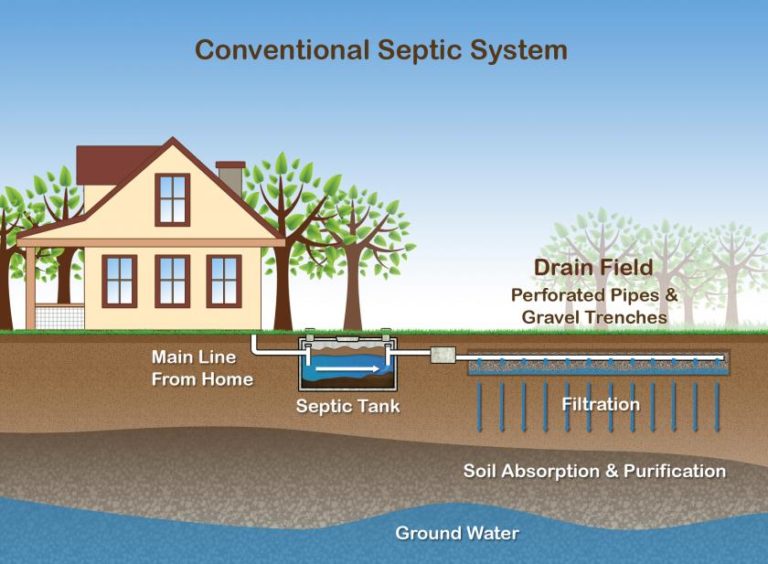WHAT IS A SEPTIC TANK & HOW DOES IT WORK?
The septic system is a small, on-site sewage treatment and disposal system buried in the ground. The septic system is comprised of a septic tank, and a soil absorption area (drain field/leech bed). All household waste is disposed of through the septic system. The proper operation of the septic system is essential to health, property value, and the ecology.
When household waste material enters the septic tank, several things occur. The organic solid material floats to the surface, and forms a layer of what is commonly called “scum”. The inorganic and inert solid materials and the by-products of bacterial digestion sink to the bottom of the tank and form a layer of commonly called “sludge”. Only fairly clean water should exist between the scum layer and sludge layers. Only the clear water should flow into your soil absorption area (drain field/leech bed).

Bacteria must be present in the septic tank to digest the organic solids and liquefy the scum layer. If not digested, the scum will build up and flow into the leech bed area causing the system to clog, back-up, and fail. Normal household waste provides enough bacteria to digest the solid UNLESS any harm is done to the bacteria. Many home-care products, such as: bleach, detergents, and disinfectants will destroy the bacteria.
The sludge in the septic tank is NOT biodegradable, and will not decompose. IT MUST BE REMOVED. If not removed, sludge will accumulate until it overflows, clogging the leech bed area, causing a back-up and system failure.
The Drain field or Leech bed general consists of a network of perforated pipes laid in a gravel-lined trench. When solids overflow into the leech bed, they clog the pipe perforations, causing drainage to slow, and eventually stop.